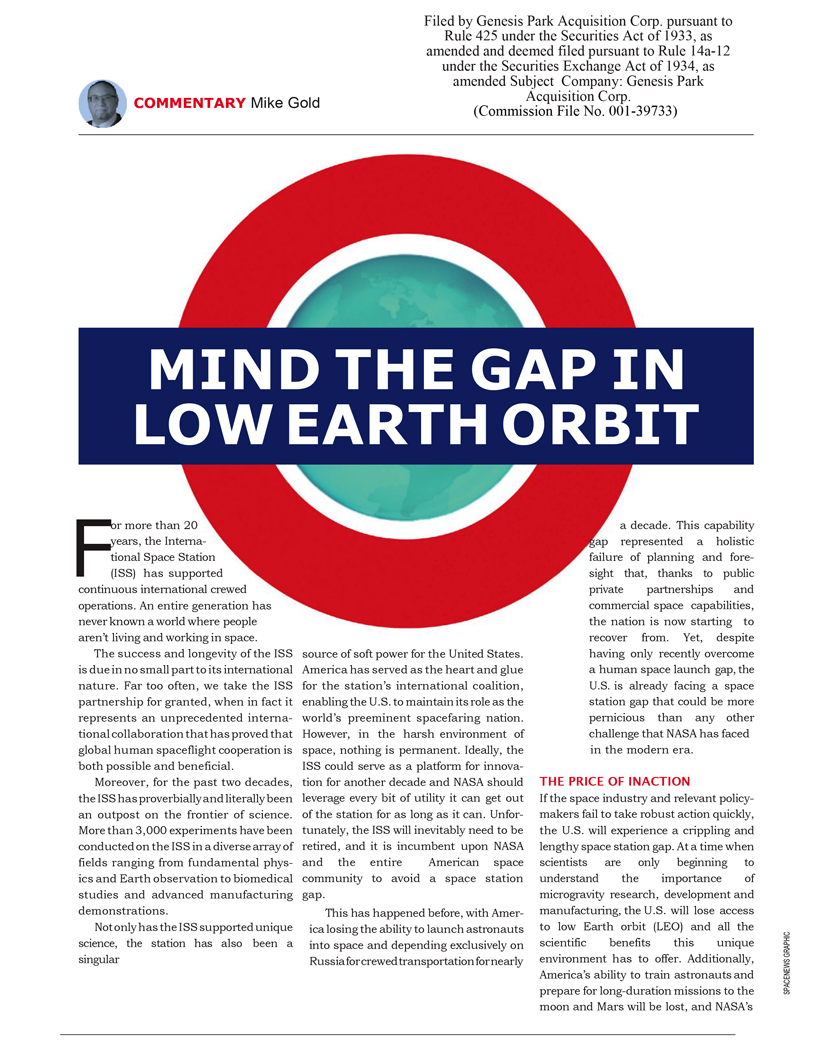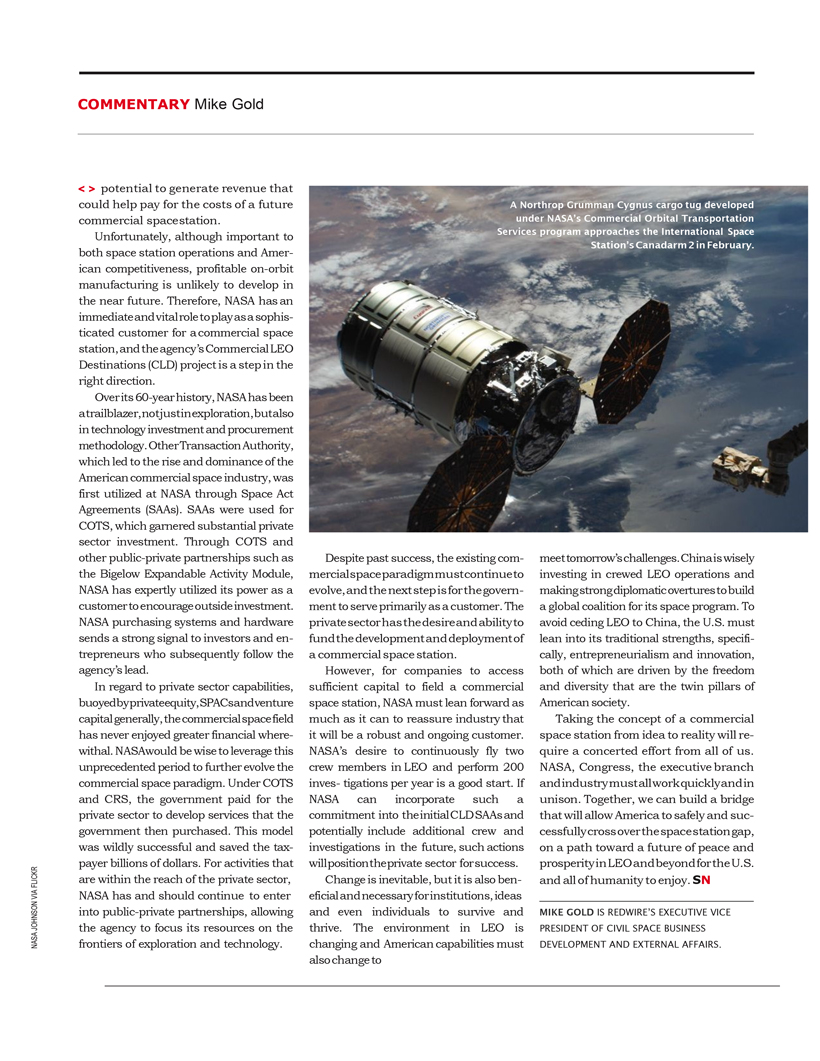
COMMENTARY Mike Gold Filed by Genesis Park Acquisition Corp. pursuant to Rule 425 under the Securities Act of 1933, as amended and deemed filed pursuant to Rule 14a-12 under the Securities Exchange Act of 1934, as amended Subject Company: Genesis Park Acquisition Corp. (Commission File No. 001-39733) or more than 20 years, the Interna- tional Space Station (ISS) has supported continuous international crewed operations. An entire generation has never known a world where people aren’t living and working in space. The success and longevity of the ISS is due in no small part to its international nature. Far too often, we take the ISS partnership for granted, when in fact it represents an unprecedented interna- tional collaboration that has proved that global human spaceflight cooperation is both possible and beneficial. Moreover, for the past two decades, the ISS has proverbially and literally been an outpost on the frontier of science. More than 3,000 experiments have been conducted on the ISS in a diverse array of fields ranging from fundamental phys- ics and Earth observation to biomedical studies and advanced manufacturing demonstrations. Not only has the ISS supported unique science, the station has also been a singular source of soft power for the United States. America has served as the heart and glue for the station’s international coalition, enabling the U.S. to maintain its role as the world’s preeminent spacefaring nation. However, in the harsh environment of space, nothing is permanent. Ideally, the ISS could serve as a platform for innova- tion for another decade and NASA should leverage every bit of utility it can get out of the station for as long as it can. Unfor- tunately, the ISS will inevitably need to be retired, and it is incumbent upon NASA and the entire American space community to avoid a space station gap. This has happened before, with Amer- ica losing the ability to launch astronauts into space and depending exclusively on Russia for crewed transportation for nearly a decade. This capability gap represented a holistic failure of planning and fore- sight that, thanks to public private partnerships and commercial space capabilities, the nation is now starting to recover from. Yet, despite having only recently overcome a human space launch gap, the U.S. is already facing a space station gap that could be more pernicious than any other challenge that NASA has faced in the modern era. THE PRICE OF INACTION If the space industry and relevant policy- makers fail to take robust action quickly, the U.S. will experience a crippling and lengthy space station gap. At a time when scientists are only beginning to understand the importance of microgravity research, development and manufacturing, the U.S. will lose access to low Earth orbit (LEO) and all the scientific benefits this unique environment has to offer. Additionally, America’s ability to train astronauts and prepare for long-duration missions to the moon and Mars will be lost, and NASA’s

